In honor of Women’s History Month, we’d like to explore the accomplishments of a few stand-out women who have made meaningful contributions to the wine industry. While we’re just going to a highlight a few individuals here today, if you want a more in-depth understanding of the role of women in wine, be sure to check out Ann B. Matasar’s informative Women of Wine: The Rise of Women in the Global Wine Industry.
Madame Clicquot
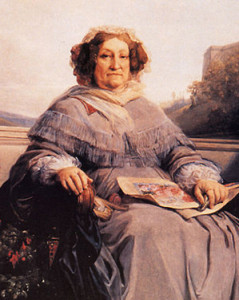 We begin in 1805 with the life of Madame Clicquot, also known as Widow Clicquot. Madame Clicquot’s husband died (by typhoid and/or suicide) when she was only 27, leaving her in control of a company that focused its efforts on banking, wool trading and Champagne. Being the smart lady that she was, Madame Clicquot chose to move all of the company’s resources into Champagne production.
We begin in 1805 with the life of Madame Clicquot, also known as Widow Clicquot. Madame Clicquot’s husband died (by typhoid and/or suicide) when she was only 27, leaving her in control of a company that focused its efforts on banking, wool trading and Champagne. Being the smart lady that she was, Madame Clicquot chose to move all of the company’s resources into Champagne production.
Under her leadership, the company developed a technique called riddling, which, during the second fermentation of the wine, involved holding the bottle upside down so the yeast could gather near the cork for easier removal later. Prior to this technique, the wines were cloudy with large bubbles and sediment. Madame Cliquot’s riddling technique is a process still used to this day by the majority of Champagne producers, with very few still opting to produce a cloudy Champagne.
Today, the bottles of wine produced by the house bear the name Veuve Clicquot, which translates to Widow (veuve is French for widow) Clicquot, in honor of this fine lady.
Dona Antónia Adelaide Ferreira
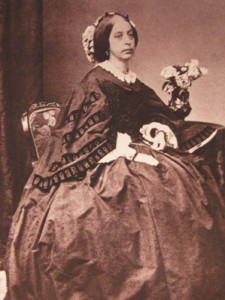 In 1844, a little further south, charismatic Portuguese businesswoman Dona Antónia Adelaide Ferreira, was making her own mark. A member of the fourth-generation of a distinguished Port-producing family, D. Ferreira established new standards for the Port house begun by her great-grandfather. These new standards led to the reputation the brand’s Port wines continue to garner to this day. But D. Ferreira is not only known for her savvy business skills and impressive contributions to the Port wine industry; she is also known for her service to the people, becoming a mythic figure in Portuguese society and a symbol of strength.
In 1844, a little further south, charismatic Portuguese businesswoman Dona Antónia Adelaide Ferreira, was making her own mark. A member of the fourth-generation of a distinguished Port-producing family, D. Ferreira established new standards for the Port house begun by her great-grandfather. These new standards led to the reputation the brand’s Port wines continue to garner to this day. But D. Ferreira is not only known for her savvy business skills and impressive contributions to the Port wine industry; she is also known for her service to the people, becoming a mythic figure in Portuguese society and a symbol of strength.
Josephine Marlin Tychson
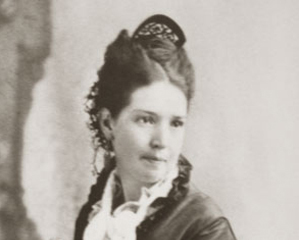 Twenty years after Madame Clicquot’s death, Josephine Marlin Tychson entered from stage west. Like Madame Clicquot, Josephine’s husband, who was afflicted with tuberculosis, passed away (also by suicide), leaving their 147-acre vineyard to her upon his death. In 1886, Josephine became the first woman to build and operate a winery in California. The original winery, called St. Helena, is today known as Freemark Abbey Winery.
Twenty years after Madame Clicquot’s death, Josephine Marlin Tychson entered from stage west. Like Madame Clicquot, Josephine’s husband, who was afflicted with tuberculosis, passed away (also by suicide), leaving their 147-acre vineyard to her upon his death. In 1886, Josephine became the first woman to build and operate a winery in California. The original winery, called St. Helena, is today known as Freemark Abbey Winery.
Isabelle Simi & Maryann Graf
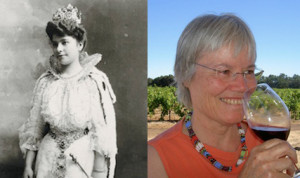 Moving forward to the twentieth century, we have Isabelle Simi, who, in 1904, began running Simi Winery in California. Not to be deterred by Prohibition, Isabelle continued to operate the winery throughout these dark days (thata girl!) by discreetly storing the wine in the winery’s cellar. Because of these efforts, Simi Winery was one of the few California wineries to survive Prohibition and was thus able to resume wine sales almost immediately after it was repealed. Also connected to Simi Winery and worth noting is Maryann Graf. Maryann was the first woman to graduate from an American university with a degree in enology and joined Simi Winery in 1973.
Moving forward to the twentieth century, we have Isabelle Simi, who, in 1904, began running Simi Winery in California. Not to be deterred by Prohibition, Isabelle continued to operate the winery throughout these dark days (thata girl!) by discreetly storing the wine in the winery’s cellar. Because of these efforts, Simi Winery was one of the few California wineries to survive Prohibition and was thus able to resume wine sales almost immediately after it was repealed. Also connected to Simi Winery and worth noting is Maryann Graf. Maryann was the first woman to graduate from an American university with a degree in enology and joined Simi Winery in 1973.
Baroness Philippine de Rothschild
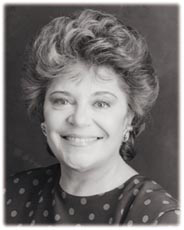 The 1970s also saw the entrance of Baroness Philippine de Rothschild, of the famed Rothschild family, into the wine industry. She joined the business in the late ‘70s and in 1988, upon the death of her father, she inherited three estates in Bordeaux. In the first twelve years of her ownership of the company, Baroness Rothschild almost doubled the sales of her father’s company — from 1.3 million cases of wine a year to 2.1 million cases a year. Needless to say, the company was left in more than capable hands.
The 1970s also saw the entrance of Baroness Philippine de Rothschild, of the famed Rothschild family, into the wine industry. She joined the business in the late ‘70s and in 1988, upon the death of her father, she inherited three estates in Bordeaux. In the first twelve years of her ownership of the company, Baroness Rothschild almost doubled the sales of her father’s company — from 1.3 million cases of wine a year to 2.1 million cases a year. Needless to say, the company was left in more than capable hands.
Merry Edwards
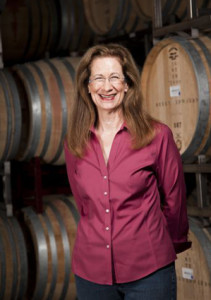 Continuing our exploration of women in wine to the present day we have Merry Edwards. Merry’s 40-year career is incredibly impressive. With a fascination for food and chemistry, Merry began with home-brewed beer which eventually led to home-fermented fruit wines. Following a degree in Food Science (with a focus on enology), Merry began her formal career in winemaking at Mount Eden Vineyards. From there, Merry was drawn to clonal research (the importance of which was not recognized in California at the time) and for the next several decades, Merry served as a well-respected consultant and winemaker. She eventually founded her own winery, Merry Edwards Winery, in 1997, in partnership with her husband.
Continuing our exploration of women in wine to the present day we have Merry Edwards. Merry’s 40-year career is incredibly impressive. With a fascination for food and chemistry, Merry began with home-brewed beer which eventually led to home-fermented fruit wines. Following a degree in Food Science (with a focus on enology), Merry began her formal career in winemaking at Mount Eden Vineyards. From there, Merry was drawn to clonal research (the importance of which was not recognized in California at the time) and for the next several decades, Merry served as a well-respected consultant and winemaker. She eventually founded her own winery, Merry Edwards Winery, in 1997, in partnership with her husband.
And, if you weren’t impressed enough with Merry, in 2013 she was inducted into the Culinary Institute of America’s Vintners Hall of Fame and also won the James Beard Award for Best Wine, Beer or Spirits Professional in the United States, the fourth woman to ever be honored with the award.
We offer a huge round of cheers to these incredible women who, over the past two centuries, have made an indelible mark on the modern wine industry.
